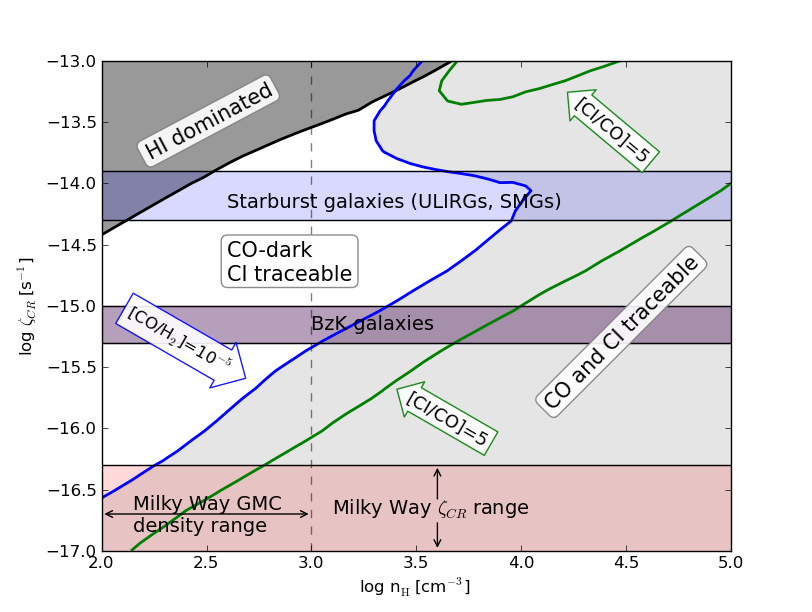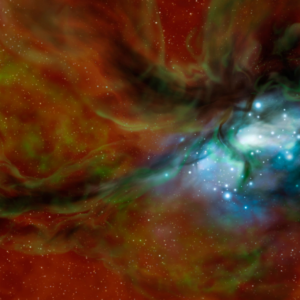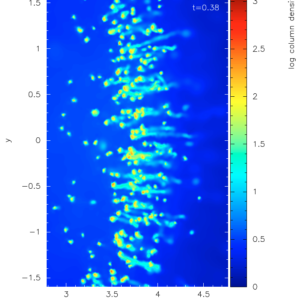
Cosmic-rays are relativistic charged particles (and not “rays” in terms of electromagnetic radiation) and play an important role in regulating the chemistry at high column densities. These high column-densities are of significant importance for Astrophysics because it is in these places where star formation takes place. Stellar photons cannot reach these regions, but cosmic-rays do and they ignite chemical networks that lead to the formation of complex molecules. The origin of cosmic-rays and how they gain their energy is generally unknown, although it is believed that they are a product of supernova explosions, strong shocks and star-formation.
In my research I have found that ordinary boosts of cosmic-rays (CRs) are able to destroy the molecule of CO very efficiently but not H2, creating vast amounts of the so-called ‘CO-dark’ molecular gas. This “CR-induced destruction of CO” is effective to interstellar medium environments expected in numerous star-forming systems throughout the Universe, particularly in the high-redshift galaxies where star formation activity is very high. It is a density-dependent effect and operates volumetrically rather than only on molecular cloud surfaces. This effect is strong enough to render Milky-Way-type giant molecular clouds CO-untraceable.
Using advanced three-dimensional astrochemical models, I have found that the CO molecule may be destroyed so thoroughly that only the densest regions of the giant molecular cloud remain CO-rich. The CO/H2 abundance ratio is sensitive to the temperature of the gas (once exceeding 50K), since a significant production of the OH molecule, acting as an intermediary, determines that ratio. CO rotational line imaging of extragalactic disks, may then reveal much clumpier structures than the actual ones. As a consequence, the wide-spread CR destruction of CO expected in such systems, will make the calibration of their CO-to-H2 conversion factor challenging.
It is therefore expected significant effects of CR-induced destruction of CO to occur in the so-called ‘main-sequence’ (MS) galaxies, the systems where most of the cosmic history of star formation unfolds. This is a result of their high star forming rates (implying high CR rates) and seemingly Galactic-type molecular clouds.
![Read more about the article Origin of the [CII]-deficit](https://thomasbisbas.com/wp-content/uploads/2023/01/deficit-300x300.png)

